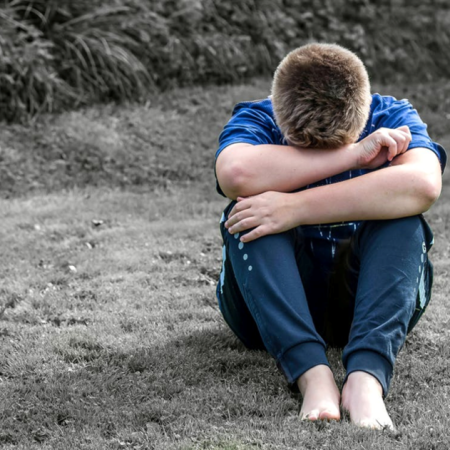Bullying: A Parent’s Guide

Bullying seems to be everywhere; in the news, on your Facebook feed and in your local schools. Chances are if you have kids, you have encountered an experience, or at a minimum a discussion about bullying.
A lot of attention is placed on the bully–that we need to stop the bully, but the reality is, that the only way to protect your children from bullying is by building that ability with your children. Both you and your children need to understand what bullying is and how to address it.
Know What It Is
The term bullying is thrown around a lot. In reality, bullying is sometimes taking place, and sometimes the situation is not bullying at all, but rather two different individuals trying to figure out how to get along and having conflict along the way.
According to www.stopbullying.gov there are several components that must be present for the situation to be considered bullying:
1. It is aggressive
2. There is an imbalance of power (a more popular child targeting an unpopular child, a child in a power of position, targeting a child with no position, etc.)
3. The unkind behavior is continually repeated
Bullying is more profound when a group targets one individual.
Bullying is not:
1. Mutually unkind behavior–where both children are being unkind
2. A situation in which children are learning relationship skills and lessons through conflict and disagreement.
Conflict is a Part of Life
In her book “Untangled,” Lisa Damour explains this well:
“Conflict is the common cold of human interaction: we don’t like it, we can’t cure it, and we just have to live with it. When humans spend time with other humans, we come into conflict with one another (and get colds). And as with the common cold, there are things we can do to relieve conflict and steps we can take to keep conflict from worsening. Bullying, on the other hand, has more in common with pneumonia. Victims of bullying are exposed, over time, to negative actions by one or more peers and have difficulty defending themselves. Bullying is serious and potentially dangerous, and it needs to be treated aggressively. Just like pneumonia, bullying can cause real, lasting damage if ignored. But our culture’s preoccupation with bullying has led to its overdiagnosis. Too many unpleasant interactions among young people are now referred to as bullying, and misdiagnosis leads to improper treatment. Treating conflict as bullying is the equivalent of prescribing a full-blown course of antibiotics for the common cold. The treatment isn’t necessary, will not cure the cold, and creates new problems. Of course, treating bullying as if it were everyday conflict is the equivalent of misdiagnosing pneumonia as a common cold—left untreated, the situation can reach critical proportions.” Damour, Lisa. Untangled (Kindle Locations 825-834). Random House Publishing Group. Kindle Edition.
There are two components you are able to change at any given time in difficult situations. You can change thinking and you can change the environment, beyond that, the world is largely out of your control
1. Help Your Child Change Their Thinking
By having a very strong home foundation, your child will be able to go out into the world stronger. Bullying can be debilitating to children when they begin to take the words and actions of the bully and allow it to define them. As bullying occurs, they begin to believe and take on the view of the bully towards themselves.
Here’s how you can help:
- Teach your children to be strong. Keep a tab on their perspective. If you hear their thought process start to change, that is a warning sign that they are in a dangerous place and you need to take immediate action.
- Talk with your child. Be aware of what is going on with them at school, church, or activities. Don’t come out and say, “Are you being bullied?” but ask them who their friends are, what happened at school today, who they talked to, what they did–get them talking and if you show you love and care, any problems or concerns they have will likely come out.
- Encourage your child to stand up to a bully. Most bullies expect little to no resistance. Standing up can be simple. If a bully tells your child they are stupid, your child can simply say, “No, I’m not,” and mean it. The more the child can handle on their own, the stronger and more resistant to the negative impacts of bullying they will become.
- Make sure you are not being a bully to your child by demeaning or insulting your child. If you are doing this, stop. Harsh and unkind behavior from a parent will exponentially hurt your child’s feelings of self-worth and is far more dangerous than bullying from another child.
- Make sure your child is neither bullying nor behaving unkindly. Oftentimes when children react unkindly it is a reaction to what is being done to them. If your child is having conflict with another child, make sure that you understand their role. Sometimes, the child who is the one actually being bullied is accused as the bully. Be mature enough to see the whole picture of the situation and act accordingly.
- Step in when needed. There may come a point when your child needs help. Don’t hesitate to help, but do know your child well enough to know when that point comes rather than going in with guns blazing the first time your child comes home reporting they had a bad day.
2. Change the Environment
- If you reach a point in which the bullying continues despite attempts by your child to stop it, or you can see that the bullying is having a significant impact on your child, it is time to step in.
- Get adults involved. This should not be an us vs. them, nor should the school authorities be the middle man. If your child is being bullied meet with the children’s authority figures involved, as well as with the other child’s parents. This gives you added layers of help and allows a full picture to emerge from which adults truly can best address the situation.
- If your child is persistently and continually being bullied, you have tried to resolve it and it continues, remove your child from the environment. That may mean they don’t participate in activities, they change schools or learn from home, or they no longer attend church, depending on where the bullying is taking place. GET THEM OUT OF THERE. Give them a respite and reprieve. If it is happening on social media, GET THEM OFF IT.
Bullying is a leading cause of suicide. According to http://www.bullyingstatistics.org some reports indicate that as many as half of youth suicides are a result of bullying. No education, social life, or living situation is worth your child killing themselves. Get them out of the situation in which they are being bullied, AT ALL COSTS! Protect them, and help them rebuild what has been torn down.




One thought on “Bullying: A Parent’s Guide”